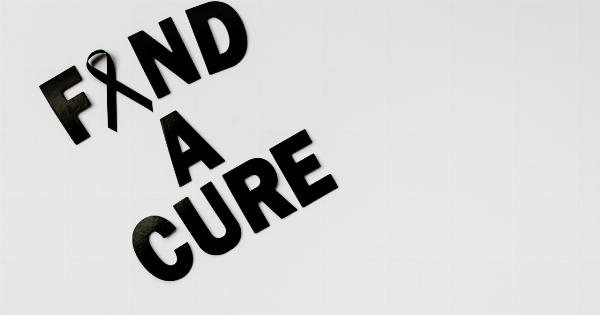When it comes to disease detection and diagnosis, cytology plays a crucial role in the medical field. Cytology is the study of cells, specifically their structure, function, and behavior.
It involves the examination of individual cells or small groups of cells to identify any abnormalities that may indicate the presence of disease. This non-invasive diagnostic technique has revolutionized the way many diseases are detected and diagnosed.
What is Cytology?
Cytology is a branch of biology that focuses on the study of cells. It involves the examination and analysis of cells from various tissues and organs to detect and diagnose diseases.
Cytology can provide important information about the structure and function of cells, as well as any changes or abnormalities that may be indicative of disease.
There are different techniques used in cytology to examine cells, including fine-needle aspiration, liquid-based cytology, and exfoliative cytology.
Fine-needle aspiration involves the use of a thin needle to collect cells from a tissue or organ, which are then examined under a microscope. Liquid-based cytology involves the collection of cells from a specific area using a brush or swab, which are then suspended in a liquid medium for further analysis.
Exfoliative cytology involves the collection of cells from body fluids or surfaces, such as the cervix or respiratory tract.
The Importance of Cytology in Disease Detection
Cytology plays a vital role in the early detection of diseases, allowing for timely intervention and treatment.
It can detect cellular changes that are not visible to the naked eye, enabling the early diagnosis of conditions such as cancer, infections, autoimmune diseases, and genetic disorders. Early detection is key to improving patient outcomes and increasing the chances of successful treatment.
One of the significant advantages of cytology is its non-invasive nature. Unlike other diagnostic techniques that require invasive procedures or surgical biopsies, cytology allows for the collection of cells in a relatively simple and painless manner.
This makes it more accessible to patients and reduces the risk of complications associated with invasive procedures.
The Role of Cytology in Cancer Diagnosis
Cytology plays a crucial role in the diagnosis of various types of cancer. It is commonly used to detect and analyze cancer cells in different tissues, including the breast, lung, cervix, prostate, and bladder.
Cytology can identify characteristic cellular changes associated with cancer, such as abnormal cell morphology, increased cell division, and loss of normal cell function.
In the case of breast cancer, cytology plays a vital role in the early detection and diagnosis of this common disease. Fine-needle aspiration cytology is often performed during the evaluation of breast lumps or suspicious masses.
The collected cells are examined under a microscope to determine if they are cancerous or benign. This technique allows for a quick and accurate diagnosis, helping to guide further treatment decisions.
Similarly, cervical cytology, commonly known as a Pap smear, is a routine screening test for cervical cancer.
It involves the collection of cells from the cervix to check for any abnormal changes or the presence of human papillomavirus (HPV), a known risk factor for cervical cancer. Cytology can detect pre-cancerous or cancerous cells at an early stage, enabling timely intervention and reducing the risk of cervical cancer.
Advancements in Cytology Techniques
In recent years, advancements in cytology techniques have further improved the accuracy and effectiveness of disease detection and diagnosis.
One such advancement is the introduction of liquid-based cytology, which has replaced the conventional Pap smear in many healthcare settings.
Liquid-based cytology involves the collection of cells from the cervix using a brush or a swab, similar to the Pap smear. However, instead of directly smearing the collected cells onto a glass slide, they are suspended in a liquid medium.
This provides a more representative sample for analysis and reduces the chances of inadequate sampling or obscuring factors, leading to improved accuracy in detecting abnormal cells.
Another significant advancement in cytology is the use of molecular testing techniques to enhance disease detection and diagnosis.
Molecular cytology involves the analysis of specific genes, proteins, or genetic markers in cells to identify disease-specific abnormalities or mutations. For example, molecular cytology can detect the presence of specific genetic mutations in cancer cells, helping to guide personalized treatment plans that target the specific genetic alterations.
The Limitations of Cytology
While cytology is a powerful diagnostic tool, it does have certain limitations. One of the main limitations is its reliance on the presence of abnormal cells for accurate diagnosis.
In some cases, the collected cells may not be representative of the entire tissue or may not show significant abnormalities, leading to false-negative results. Therefore, additional diagnostic tests may be required to confirm the absence of disease.
Another limitation is the subjectivity involved in cytological interpretation. The analysis of cellular morphology and identification of abnormal cells can be subjective, and different cytologists may have varying interpretations of the same sample.
To minimize this subjectivity, quality assurance measures, such as proficiency testing and inter-laboratory correlation, are often implemented to ensure accurate and reproducible results.
Conclusion
Cytology plays a critical role in disease detection and diagnosis, particularly in the early identification of cancers and other diseases.
It provides a non-invasive, accessible, and relatively painless method for collecting and analyzing cells, enabling timely intervention and improving patient outcomes. Advancements in cytology techniques, such as liquid-based cytology and molecular testing, have further enhanced its accuracy and effectiveness.
However, it is important to acknowledge and address the limitations of cytology to ensure accurate and reliable diagnosis.




























